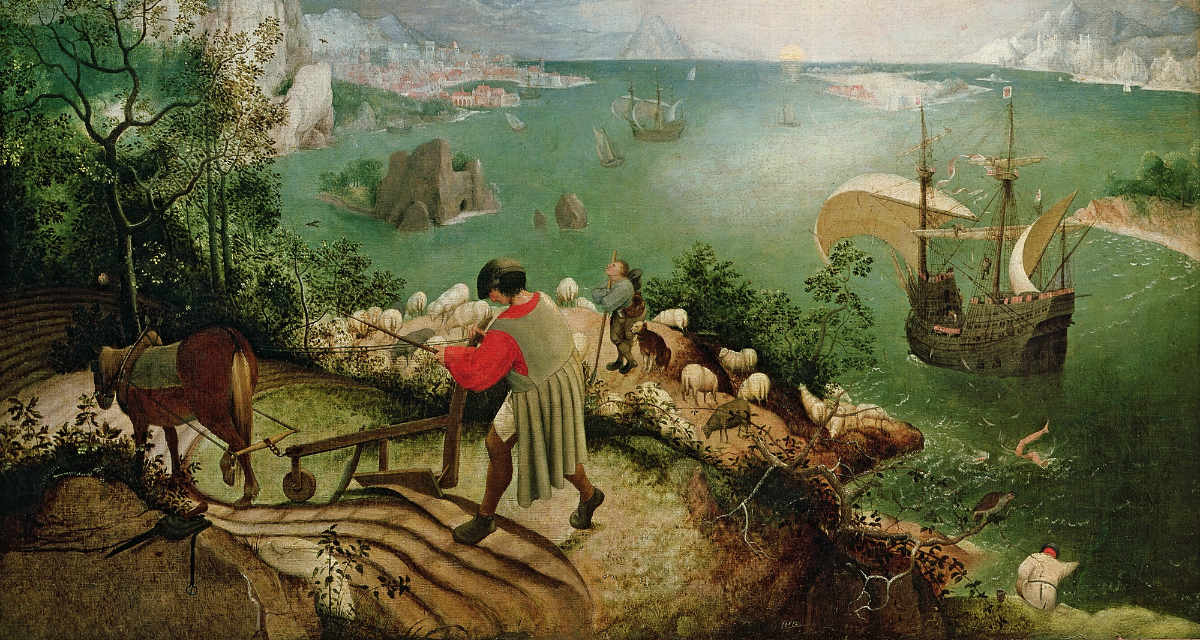
Stem cell Icarus
Paolo Macchiarini is one of many who have fallen from the heights

Landscape with the Fall of Icarus, attributed to Pieter Brueghel the Elder
What happened to the disgraced Italian surgeon who dazzled the world with artificial tracheas built up with stem cells, Paolo Macchiarini? Despite all the hype, several of his patients eventually died; others are still seriously ill. The ensuing debacle dragged Sweden’s Karolinska Institute into the mire and Swedish police are investigating whether he should be charged with involuntary manslaughter.
At the moment Macchiarini is the head of a research team in bioengineering and regenerative medicine at the University of Kazan, in Tatarstan, about 800 kilometers east of Moscow. But Russian authorities do not allow him to do clinical work. Instead he is confined to doing research on baboons.
Unfortunately, the story of the Italian Icarus is the story of many research projects with stem cells –noisily rising and rising and rising and then silently falling out of sight. Very few stem cell therapies have reached stage IV of clinical trials.
As journalist Michael Brooks points out in the BMJ, stem cell research is a field plagued by unrealistic expectations. One study showed that 70% of newspaper articles about stem cell research have stated that clinical applications are “just around the corner,” “in the near future,” or “within 5 to 10 years or sooner.”
“This is not simply a problem of media hype,” writes Brooks. “In a surprisingly large number of cases, the source of these unrealistic expectations can be traced back to the scientists themselves.”
Another source of false hope is the very success of some treatments. In clinics all over the world, doctors are using unproven techniques to treat patients – and sometime they appear to work. But despite “grandiose” claims, these successes are not documented properly and could even be spontaneous remissions. There need to be rigorous clinical trials.
A major figure in the growth of the stem cell field, Alan Trounson of the Hudson Institute in Victoria, Australia, who used to head the California Institute for Regenerative Medicine, told Brooks that “Fame and fortune is seductive and stem cells is one of those areas which can provide this.” Close supervision is needed to keep researchers on the straight and narrow.
Finally, one cause of the stem cell hype is simply pride. The Karolinska succumbed to this temptation. According to its internal investigation, protecting its reputation led to “a risk of inadequacies and shortcomings not coming to light.”
Perhaps, says Brooks, “The Macchiarini affair might have a silver lining for stem cell research as a whole. He quotes a man who should know, Alan Trounson: “I believe the field will move on with a little more care—we certainly need to.”
https://www.bioedge.org/images/2008images/TH_icarus.jpg
Creative commons
https://www.bioedge.org/images/2008images/FB_Pieter_Bruegel.jpg
alan trounson
paolo macchiarini
stem cells
- How long can you put off seeing the doctor because of lockdowns? - December 3, 2021
- House of Lords debates assisted suicide—again - October 28, 2021
- Spanish government tries to restrict conscientious objection - October 28, 2021
